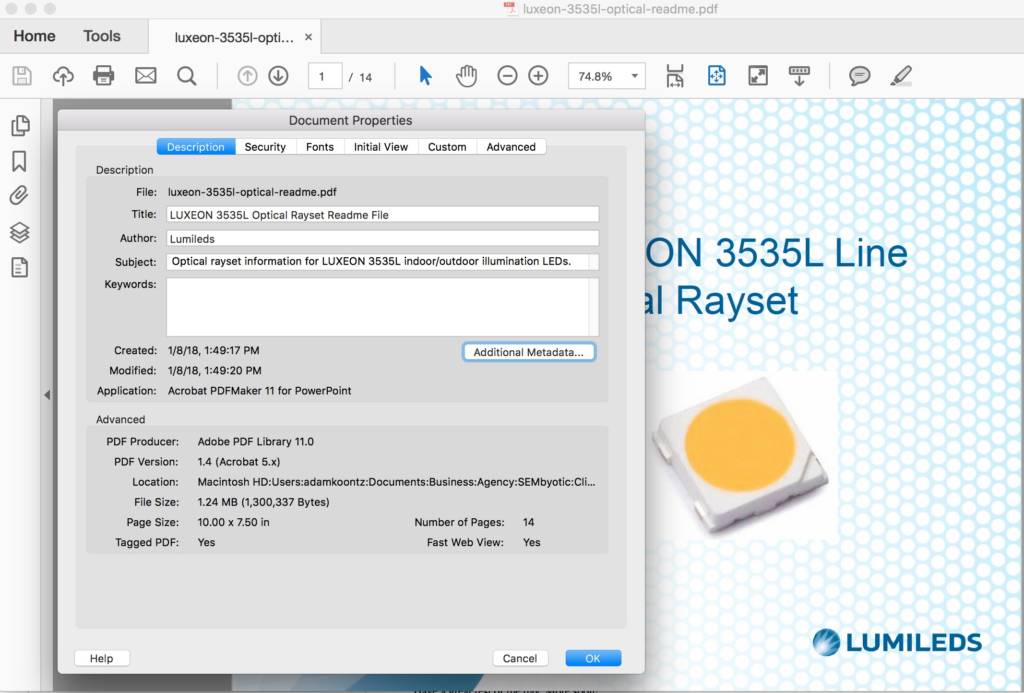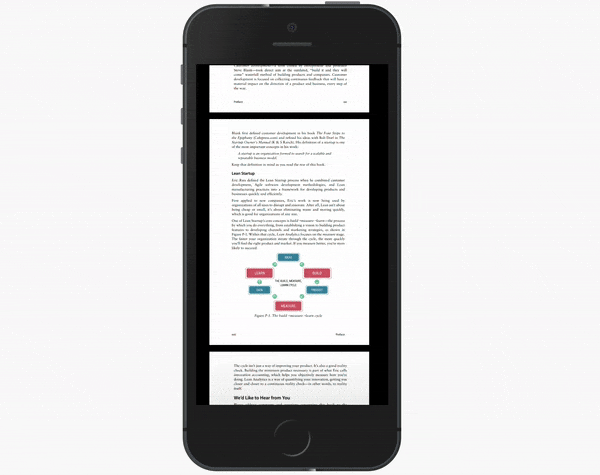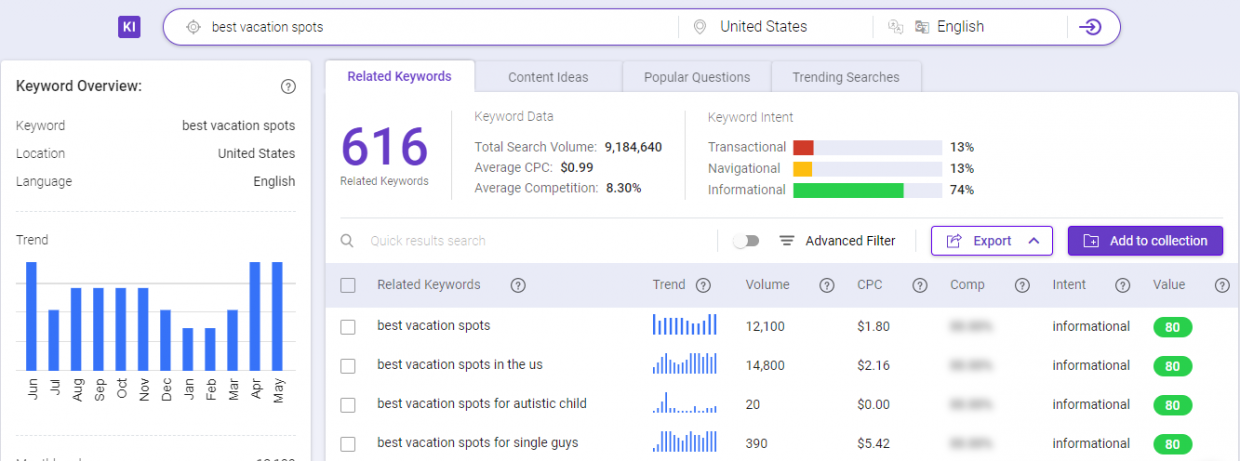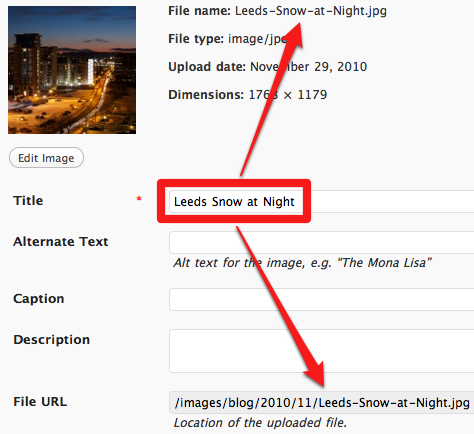Google does index PDF files. This allows you can optimize your PDF for search as PDF files can be indexed and ranked on search engine results page. Here are 6 simple steps to optimize PDF for SEO.
Did you know that you can optimize PDF for SEO?
There was a rumor that Google couldn’t index PDFs.
However, that has now been debunked.
Google indexes most files and pages such as Adobe Flash, excel, docs, and Microsoft documents.
PDFs can be indexed just like any other document on your website unless they are password protected.

If the PDF text is embedded as images, Google may process the images and extract the text using Optical Character Recognition, OCR.
Generally, if you can copy/paste the text contained in a PDF, Google can search and index the PDF content.
The links contained in the PDF are also treated in the same way as those found within web pages.
This means that if your PDF can be indexed and ranked, you need to optimize your PDF content to rank on Google search engine results pages.
Pros of PDF
Easy to create
PDFs are easy to create, making them quite convenient when coming up with content for your website.
You could create your content from any place using multiple devices and post it on the internet in readable formats.
Has metadata
PDFs contain metadata such as meta keywords and meta descriptions, which you can edit to your liking in the properties menu.
Metadata describes and summarizes necessary information about other data in your content.

Google uses this data to learn more about your webpages.
They can also use it for ranking purposes, when displaying snippets in search results, etc.
Google doesn’t “read” your content.
It is indexed by seeking information from defined metadata fields.
Content is indexable
Indexing refers to a data structure system that helps search engines efficiently retrieve data from a database based on various attributes.
It is quite similar to what is found in books.
And its main aim is to help search engines retrieve relevant data as soon as a query is made.
Since search engines can read and index your PDFs, it makes sense.
And it would be more convenient if you optimized it for search results.
Doing this could help your website get more visibility in Google’s SERPs hence more traffic.
Cons of PDF
The PDF file may be long
Content in a PDF is as long as your topic.
Most content is created in the form of a pdf because it would be more manageable in this state for both creators and users.
The content often includes research papers, reports, etc., which often contain tons of information.
You could compile all your topics into one PDF.
However, you’d be losing other sources of search traffic since you’ll only have a single URL for that one file.
Lack of navigation
PDFs lack site navigation, which may make it hard for your audience to visit other pages on your site from your PDF.
The lack of convenience and flexibility could lead to low user experience and consequently reduced rankings and traffic.
Not mobile-friendly
Websites have evolved for easier access through mobile devices as well as pcs and laptops.
On the other hand, although sometimes practical, PDFs aren’t that great to use with mobile devices.

The lengthy files and lack of optimal navigation make it hard for mobile users to use PDF documents to consume information.
Can’t add structured markup
Schema markup, another name for structured markup, is a code that helps search engines crawl your site better.
Schema markup communicates with search engines and helps them understand what your data is all about.
PDFs don’t have the capacity for schema markup applications, making it hard for you to appear in rich snippets.
This could make you lose out on valuable traffic that could have proven resourceful to your website’s growth.
How to Optimize SEO for PDF
There are lots of pros that come when you optimize SEO for PDF.
You stand to get more traffic flows to your website, higher rankings, better indexing, and a better-targeted audience.
Do you want to know how you can optimize PDF for search?
Let’s go ahead and discuss.
1. Write Good Content
Since Google can index PDFs, it would be best to treat them the same way you would your blog posts.
You’ll need to create excellent content that can be useful to your audience with an excellent SEO for PDF.
The content should be relevant and targeted to solve particular challenges that your audience faces.
BiQ’s Content Intelligence would be a great way to optimize your PDF for search.
Our SEO tool is meant to help content creators develop good-quality, optimized content that their readers can find helpful.
But how exactly can you use BiQ’s SEO suite to create better content?

Assuming that you have a great keyword at hand, you’ve got to find the most relevant content that you could write that goes great with the keyword.
Most people often slide across to Google, open several tabs, and begin their content creation process.
Now, this isn’t a bad strategy.
However, it may be an inconvenience if you asses it analytically.
Why do I say that?
Opening tabs on Google may take lots of time, and since human beings are prone to err.
There is a substantial possibility that you may get irrelevant information from weak sources.
Once you enter a keyword on BiQ’s Content Intelligence, the algorithm analyzes all the keywords and provides you with a list of all top-performing organic content on Google.
It also breaks down the keywords in terms of usage, related keywords, and examples in sentences.

For instance, let’s say that you are writing a piece on “best vacation spots.”
You could type in the keyword on BiQ’s Content Intelligence and get a Wordscope analysis for similar keywords.
Similar keywords are meant to help readers connect with your content.
You could also use the keywords as an outline for your content.
Kill two birds with one stone!
2. Optimize Your Title
As we discussed earlier, PDFs are similar to other pages where search engines are concerned.
Therefore, it would be best to optimize their titles by adding the most relevant, high value, low-competition keyword to boost your SERP rankings.
Don’t know what keywords to use?
BiQ tools are a tremendous analytical source of keyword data.
BiQ Keyword Intelligence could help you find the right keywords for your PDFs titles to help you get higher rankings and more traffic.

When you perform your keyword research through BiQ’s Keyword Intelligence, you get useful metrics with these keywords such as keyword volume, keyword competition, trends, related keywords, and more.
One feature that makes our tool stand out from other market keyword tools is the keywords analyzer.
The feature helps you see why users may be searching through that particular keyword.
This data could help you create your content so that it meets your audience’s needs.
If you’re not sure about which keywords to use, you have an option to sort the keywords based on keyword value.
Higher valued keywords are more likely to draw in lots of traffic with minimal competition.
3. Optimize Your Meta Description
As discussed earlier, meta descriptions are summaries of the content contained in your page meant to benefit users and search engines.
The more relevant, detailed, and optimized your meta description is, the higher you’ll rank on Google’s SERPs.
Google displays 148 characters in the meta description section.
Therefore, it would be more useful to optimize your meta description if you want all the information shown.
You’ll also have to place keywords in your meta description for better rankings.
It would be best if you used researched, target keywords that are relevant to your content.
You’ll need to communicate your page’s benefits and urgency that compels the reader to click through to your website.
Finally, you’ll need to place the meta description just below the title.
Click here to learn more about best practices for meta descriptions.
4. Optimize Your Filename
If you are searching for a straightforward way to improve your SEO for PDF, you found it.
PDF file names could be for documents or images, and optimizing them helps boost your rankings and consequently your traffic.

It would better if you named your files using keywords relevant to your content.
Doing this helps search engines crawl your site more efficiently.
The more related and relevant keywords they find in your PDF, the better chances you have of being ranked even higher.
However, when optimizing your file names, you’d rather use hyphens or dashes instead of other symbols such as underscores.
Using hyphens helps users understand your web files and an assurance that Google’s search engine will crawl and index your site.
You could still get relevant keywords from BiQ’s Keyword Intelligence tool if you’re not able to find some elsewhere.
You could include short keywords with different words but have similar semantic meaning to provide the allure of diversity.
5. Add Alt Tags For Images
Google produces almost as many image results as it does text-based results.
And what’s more, it displays the image results nearer to the top of search engine results pages.
These images are clickable, implying that websites with higher ranking images are more likely to get more traffic.
Alt attributes, which are also referred to as alt tags, are alternative text used to describe what the images represent.
They are used as alternatives for the visually impaired people who use screen readers to browse the web.
However, content creators could still use them in webpages that take a lot of time to load images.
How do you write a tag for a photo?
An excellent alt tag for images should be detailed, descriptive, and have your target keyword.
The keyword communicates to Google what your content is all about and how the image is related.
For instance, say your photo is about computer lessons.
The image used may be showing a college tutor pointing at a learner’s screen.
There are two ways you could write this.
Either by examples A or B.
Add your keyword, and you are good to go!
A.

B.

6. Include Links
Creating links on your PDF document could be another great way to improve your rankings.
However, you’ll have to add useful links that will lead your reader to more relevant information concerning the content that they’ll find on your website.

Creating a link isn’t as simple as typing in your website’s URL.
To create a workable link, you’ll need to use a link creating tool to help you create hyperlinks in your PDF document.
This is the only way to be sure that your links will be clickable and working.
To create links, you’ll have to have adobe professional.
Open your PDF doc and click on advanced editing under tools.
You’ll then need to click on the link tool and, taking your cursor, left-click on the area you want to add a hyperlink and fill in your website or any other link.
Links affect rankings, which means that it would be best to create new links whatever chance you got.
Conclusion
PDFs aren’t the best content development platform for SEO.
Looking at their pros and cons, you can see that their cons outweigh their pros.
However, this doesn’t mean that you should stop using them.
Sometimes you may find that you don’t have any other option and are forced to create long, detailed content.
Sometimes the content cannot fit your website’s page, forcing you to use a PDF document.
The best thing to do in this instance is to create good content and optimize it as efficiently as possible since the content is still being ranked.
You wouldn’t lose anything by giving it your best, would you?
Have fun creating and optimizing your PDF for SEO.
And as always, I would love to hear back from you.
Leave a comment and tell me how you optimized your SEO for PDF and what challenges you may have stumbled upon.
Cheers!




